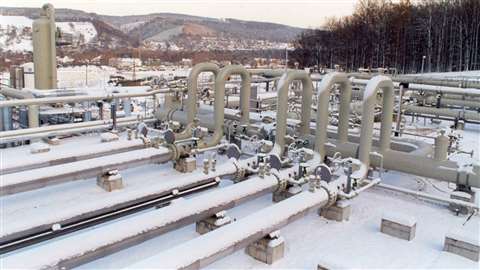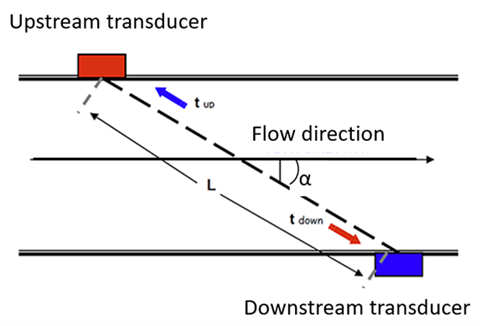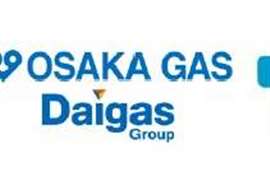TechCorner: EFRC guidance on flow meter errors for recips
August 24, 2021
André Eijk and Leonard van Lier report on the benefits of following the European Forum for Reciprocating Compressors’ new guidelines for flow meter errors.
 Figure 1. Custody transfer flow meter section
Figure 1. Custody transfer flow meter section
Flow meters are installed for custody transfer purposes and to control pressure or flow at chemical plants, natural gas transport systems, refineries and underground gas storage plants.
Yet errors in flow measurement can have severe consequences. For example, the stability of the process control may be disturbed, leading to unwanted and even dangerous situations.
In addition, in the case of custody transfer, systematic metering errors may have negative economic consequences for suppliers and consumers. Various disturbance mechanisms may affect flow metering accuracy. A well-known disturbance mechanism is the distortion of the flow profile upstream of the flow meter.
Another disturbing effect may be due to pulsation effects in the fluid flow. Positive displacement machinery, such as reciprocating compressors and generate pulsations (in both pressure and flow). This can have a significant effect on the accuracy of different types of flow meters, even when the pressure pulsations are below the limits as stipulated in API Standard 618.
Difficulty in detecting flow meter issues
Detecting a potential issue with flow meter accuracy is extremely difficult, as these problems are not normally associated with ‘common’ observations such as high levels of vibration and resulting equipment failure.
It has been recognised that there is a lack of knowledge on this subject, and that its importance is underestimated or not recognised during the selection of the flow meter and design of the system layout.
For that reason, the standardisation group of the European Forum for Reciprocating Compressors (EFRC) decided to develop new guidelines entitled “Flow meter errors in pulsating flow of reciprocating compressor systems,” which is intended to close the knowledge gap in this area.
These EFRC guidelines establish procedures for determining errors in flow measurement, and provide instructions on how to reduce flow meter errors to acceptable values. It is essential that this guidance should be used with API 618, ISO TR 3313 and other standards, guidelines and publications.
Although the EFRC guidelines were specifically developed for reciprocating compressor systems, parts of it can also be used for other positive displacement machinery such as reciprocating pumps and screw compressors.
The scope of the EFRC’s directives focuses on five types of flow meter that are commonly applied in reciprocating compressor systems. These are pressure differential (DP), vortex, turbine, ultrasonic and Coriolis flow meters.
 Figure 2. Principle of an ultrasonic flow meter
Figure 2. Principle of an ultrasonic flow meter
The EFRC guidelines provide a general description of the principle of each flow measurement technology and the possible errors in the flow reading.
They indicate methods for correcting the flow meter output signals for errors produced by pulsations and external vibrations, and for keeping these errors within acceptable limits.
 Figure 3. Principle of a vortex flow meter
Figure 3. Principle of a vortex flow meter
The EFRC’s instructions are based on practical experience, combined with surveys of the most recent literature and existing guidelines and standards. A limited set of interviews were conducted with leading experts from various branches of the industry (compressor OEMs, end users, EPC contractors and flow meter manufacturers.)
The first chapters present general background information by introducing the reader to the various flow meter types, their sensitivity to errors caused by pulsating flow, threshold values of pulsations and allowable flow meter errors as well as some best practices for handling issues with flow meter accuracy in reciprocating compressor systems.
This section overall presents the reader with a solid understanding of the causes and consequences of flow meter errors in pulsating flows, focusing on reciprocating compressor systems.
The remainder of the document is devoted to more detailed information for each type of flow meter, including how to calculate the measurement error and possible methods to reduce this.
The EFRC guidelines contain the following sections:
- Background information on acoustic wave theory, which can be used to understand the difference between pressure and velocity pulsations, acoustic resonances, and so on. This information is important in finding optimum solutions to flow meter errors;
- Best practices for handling issues with flow meter accuracy in the early stages of system design, and how to select the optimum flow meter for reciprocating compressor systems;
- Explanation of threshold values for pulsation effects and allowable limits for flow meter errors, as stipulated in several different international standards for different types of flow meters;
- Flowchart for each flow meter type, providing an overview of flow meter errors, calculation methods and details on how to reduce these errors;
- Practical examples of pulsation analysis, showing the optimum locations of flow meters;
- Short summary of each flow meter type and its sensitivity to disturbing phenomena (such as flow, pulsations and external vibrations), that can cause measurement errors. There is also a summary of the effect of flow meter errors on custody transfer, flow control applications and acceptance tests;
- Summary of the standards, guidelines and publications that have been used in the development of these guidelines, and;
- Working principles of pressure differential (DP), vortex, turbine, ultrasonic and Coriolis flow meters. This section summarises the various phenomena causing flow metering errors, and methods to reduce these errors.
MAGAZINE
NEWSLETTER

CONNECT WITH THE TEAM








